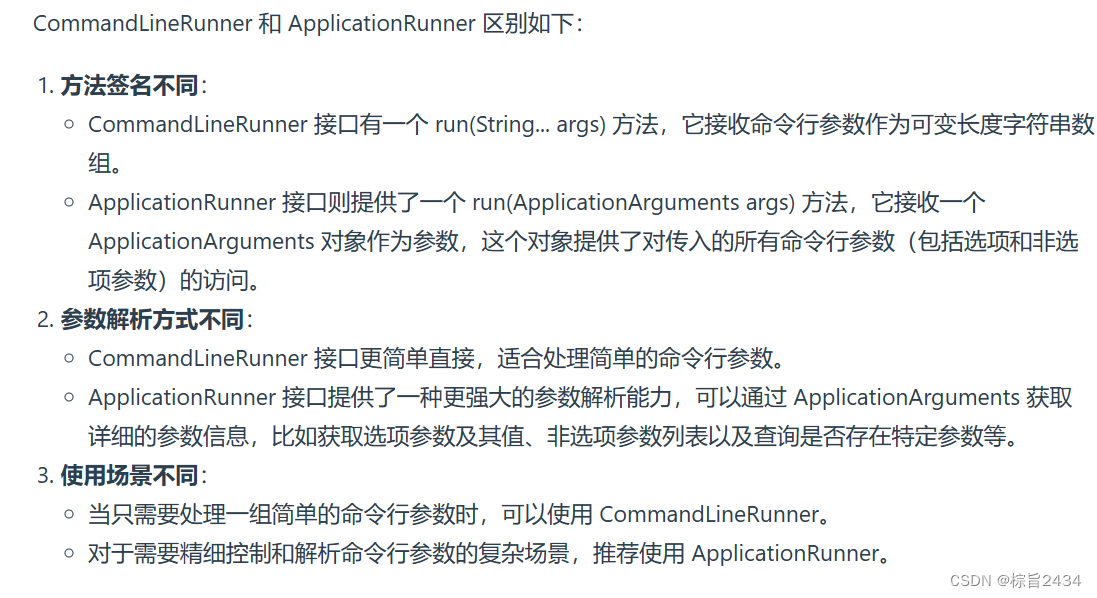Spring Boot 实现缓存预热
- 1、使用启动监听事件实现缓存预热。
- 2、使用 @PostConstruct 注解实现缓存预热。
- 3、使用 CommandLineRunner 或 ApplicationRunner 实现缓存预热。
- 4、通过实现 InitializingBean 接口,并重写 afterPropertiesSet 方法实现缓存预热。
1、使用启动监听事件实现缓存预热。
使用 ApplicationListener 监听 ContextRefreshedEvent 或 ApplicationReadyEvent 等应用上下文初始化完成事件。
@Component
public class CacheWarmer implements ApplicationListener<ContextRefreshedEvent> {@Overridepublic void onApplicationEvent(ContextRefreshedEvent event) {// 执行缓存预热业务...cacheManager.put("key", dataList);}
}@Component
public class CacheWarmer implements ApplicationListener<ApplicationReadyEvent> {@Overridepublic void onApplicationEvent(ApplicationReadyEvent event) {// 执行缓存预热业务...cacheManager.put("key", dataList);}
}2、使用 @PostConstruct 注解实现缓存预热。
@Component
public class CachePreloader {@Autowiredprivate YourCacheManager cacheManager;@PostConstructpublic void preloadCache() {// 执行缓存预热业务...cacheManager.put("key", dataList);}
}
3、使用 CommandLineRunner 或 ApplicationRunner 实现缓存预热。
@Component
public class MyCommandLineRunner implements CommandLineRunner {@Overridepublic void run(String... args) throws Exception {// 执行缓存预热业务...cacheManager.put("key", dataList);}
}@Component
public class MyApplicationRunner implements ApplicationRunner {@Overridepublic void run(ApplicationArguments args) throws Exception {// 执行缓存预热业务...cacheManager.put("key", dataList);}
}
4、通过实现 InitializingBean 接口,并重写 afterPropertiesSet 方法实现缓存预热。
@Component
public class CachePreloader implements InitializingBean {@Autowiredprivate YourCacheManager cacheManager;@Overridepublic void afterPropertiesSet() throws Exception {// 执行缓存预热业务...cacheManager.put("key", dataList);}
}

:解析其关键特性与机制)





)











